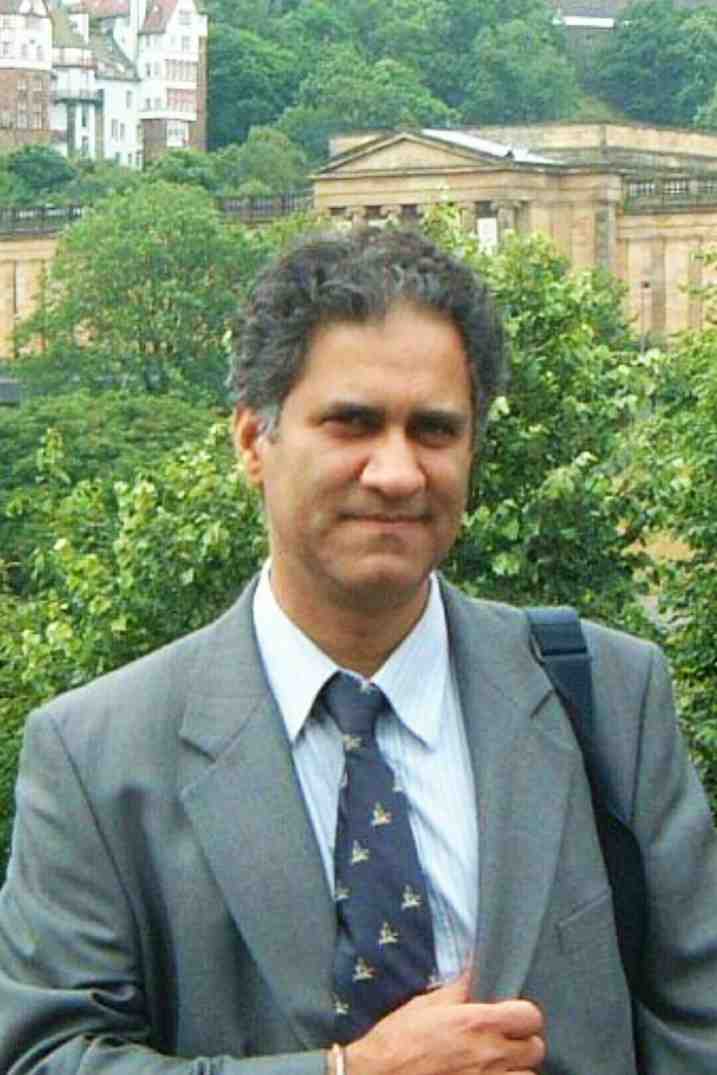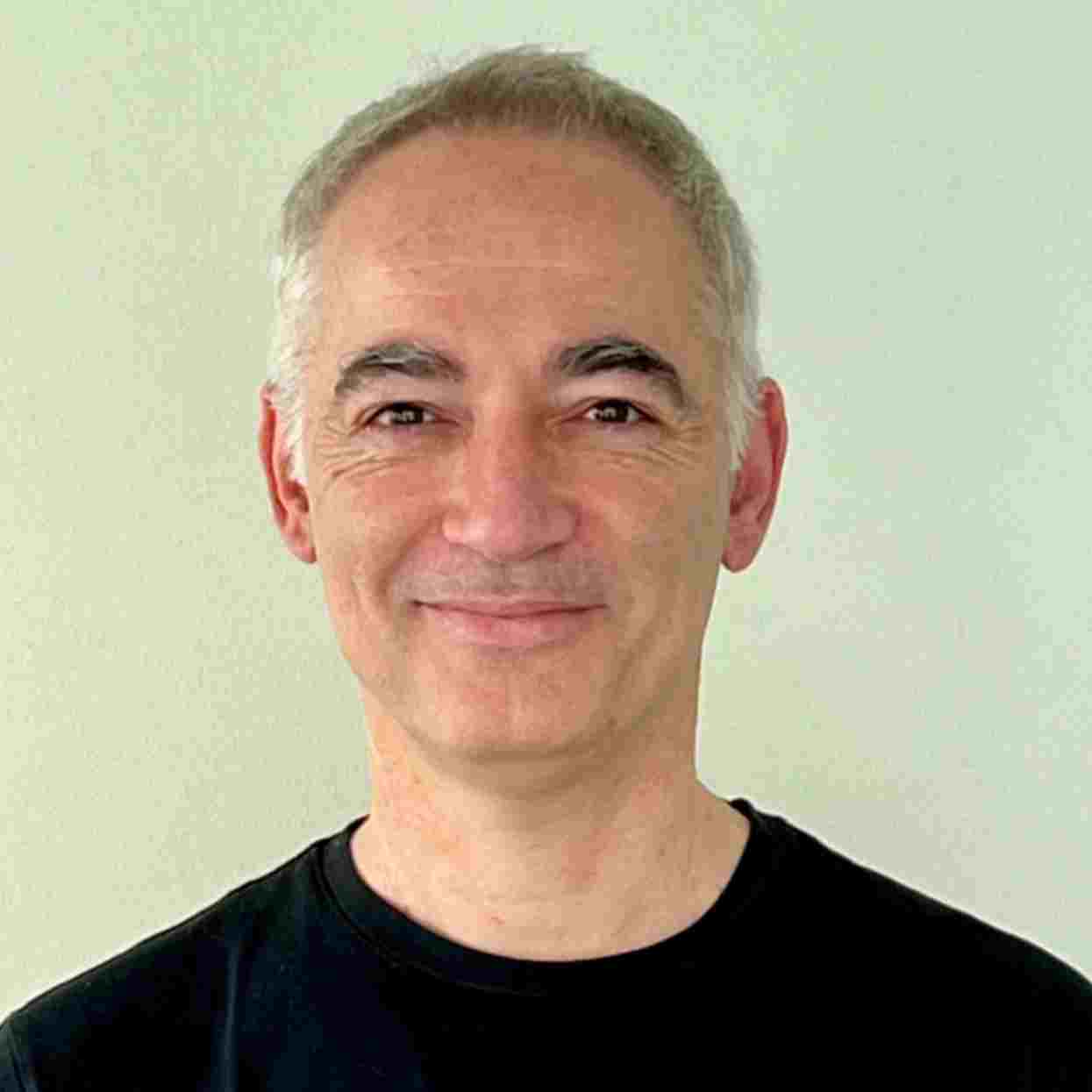AUCTORES
Globalize your Research
Research Article | DOI: https://doi.org/10.31579/2693-4779/259
1Faculty of Mechanical Engineering, Ferdowsi University of Mashhad, Mashhad 91779-48974, Iran.
*Corresponding Author: Hamedreza Kafash, Faculty of Mechanical Engineering, Ferdowsi University of Mashhad, Mashhad 91779-48974, Iran.
Citation: Hamedreza Kafash, Asghar Baradaran Rahimi, (2025), Evaluation of Septoplasty on Airflow Patterns in A Patient with Nasal Septal Deviation Using Computational Fluid Dynamics, Clinical Research and Clinical Trials, 12(4); DOI:10.31579/2693-4779/259
Copyright: © 2025, Hamedreza Kafash. This is an open access article distributed under the Creative Commons Attribution License, which permits unrestricted use, distribution, and reproduction in any medium, provided the original work is properly cited.
Received: 07 March 2025 | Accepted: 27 March 2025 | Published: 07 May 2025
Keywords: nasal septum deviation (nsd), septoplasty, computational fluid dynamics (cfd)
Background: The fluid flow in channels with deviation change in the cross-sectional area in a part of the channel can have a turbulent behavior. Nasal Septal Deviation (NSD) is such channel and can disturb airflow. Computational Fluid Dynamics (CFD) can show the critical points that cause turbulence or blockage of the flow by analyzing the airflow passing through the nasal cavity in detail.
Objective: We evaluated a patient with nasal septal deviation before and after correcting septum surgery (septoplasty). With the help of Computational Fluid Dynamics (CFD) by showing the patterns of airflow through the patient's nasal cavity and accurately locating the deviation of the septum along with showing the disturbance of the passing airflow to the surgeon, it is possible to preserve healthy tissues.
Methods: First, Computed Tomography (CT) of the nasal cavity and paranasal sinuses was done. Then, using Mimics software, the basic 3D geometry of the nose was made. Due to the point-like nature of the created shape, we converted the 3D geometry from the point to a linear geometry and finally to a volumetric geometry by CATIA software. Considering the transient flow from the nasal tip, simulation of the numerical method at air flow rates of 15, 17.4, 20, 25 and 40 lit/min was done using the k-ω SST turbulence model. We considered the non-slip and smooth nasal wall and steady flow at 22 ᵒC. According to CFD data and turbulence area the exact location of nasal cavity which caused obstruction was shown to surgeon and septoplasty was done. 3D modeling using CFD was done and airflow parameters were evaluated again three months after surgery to evaluate development of airflow behavior.
Results: The peak velocity was found at 3 to 6 cm from the nostril before septoplasty, but the peak velocity was at the nasal valve after septoplasty. The airflow resistance decreased from 0.97 Pa×min/lit to 0.53 Pa×min/lit after septoplasty for a flow rate of 17.4 lit/min (the beginning of airflow disturbance). Also, the pressure drop for a flow rate of 17.4 liters per minute was 16.878 Pa, which decreased to 9.222 Pa after surgery. The highest wall shear stress was also at a distance of 4.1 and 5.07cm from nasal tip before and after septoplasty respectively. The highest wall shear stress was 3.85×10-2 Pa before septoplasty, but after septoplasty it decreased to 2.78×10-2 Pa.
Conclusion: Nasal septal deviation increases the velocity, resistance, pressure drop and creates a vortex in the airflow, which leads to obstruction of the airway passing through the nasal cavity. CFD showed difference in nasal airflow parameters in patients with deviated nasal septum before and after septoplasty, so it can help surgeon find the exact area which causes obstruction and septoplasty can be done according to CFD data.
The nasal cavity is known to be one of the most important parts of the human airway system, which provides the first protection stage of the lungs by heating and moistening the air [1–3]. The upper respiratory tract from the valve of the nose to the entrance of the larynx plays an important role in delivering oxygen to the lungs, leads to absorbing in blood. However, the cross-sectional regularity of the air passage from the nasal cavity to the larynx plays an important role in getting enough oxygen to the lungs and improving respiration. Hence, a better understanding of how streamlines of airflow, the velocity and pressure at obstructive and critical points in the nasal cavity on the inhaled airflow is essential [4, 5].
The complicated structure associated with the nasal anatomy makes it difficult to measure the resistance of the nose [6]. Determining the nasal anatomy and physiology is difficult due to the small size of these airways. Several researchers have performed studies of airflow in the nasal cavity using measuring devices such rhinomanometry and acoustic rhinometry [7–10].
Harkma et al. and Grotberg reported that determining the exact location of the obstruction in the nasal cavity is the first step in identifying the most important factors playing a role as understanding nasal and upper airway pathology [11]. Airflow through the human upper respiratory tract has been studied numerically and experimentally by several researchers [12–26].
Rhinomanometry is used to measure the pressure of airflow through the nasal airway and acoustic rhinometry is used to measure the cross section of the airway in different planes of the nose. However, measuring the exact velocity of the airflow and assessing the cross-sectional area in each part of the nasal cavity is difficult [27–31].
The reliability of the results obtained using this device depends on the favorable cooperation of the operator of the rhinomanometric device and the patient, the calibration of the device and correct executive instructions by the physician and the use of standard techniques. Due to the inherent limitations of existing measuring instruments, Computational Fluid Dynamics (CFD) has been proposed as a suitable option [32].
CFD which refers to the use of numerical methods to solve the Partial Differential Equations (PDE) governing fluid flow, is becoming an increasingly popular research tool in the study and prediction of fluid dynamics [33].
Tretiakow, D et al. used nasal CT scans from 16 patients to process images and made a model of the human nasal cavity and sinuses using a 3D slicer for segmentation and new surface model generation. Further processing was performed in Autodesk® Mesh Mixer TM (https://meshmixer.com/). The underlying equations were discretized using the finite volume method. The corresponding system of algebraic equations was then solved using Open foam software (https://www.openfoam.com/). The CFD results were presented using sample 3D models of patient 1 (normal) and patient 2 (pathological changes). As a conclusion, CFD is recommended to be used in clinical practice and also in research as a beneficial objective tool to evaluate the nasal airway [34].
CFD is also useful in evaluating the outcomes of nasal surgery. For example, partial or complete inferior turbinate reduction is assessed and compared in Lee et al.’s study using CFD analysis [35].
The mechanism of feeling obstruction in a patient with atrophic rhinitis (excessive dilation of nasal cavity) using CFD is discussed well in Ya Zhang et al.’s study [36].
In this study, we aimed at using CFD data for determining the exact area that caused obstruction and suggesting the surgeon to do septoplasty according to mentioned area not only saves the healthy nasal tissue, but also improves the results of septoplasty.
Reconstruction of geometry
The patient was a 45-year-old man of Iranian nationality who had breathing problems due to obstruction of the right nasal cavity. The NOSE questionnaire score for the patient was 12 (the NOSE questionnaire is uploaded as a supplementary material). The patient has not had a common cold, sinusitis, nasal polyps, previous surgery on the nose or trauma to the face in the past six months. First, Computed Tomography (CT scan) images of the face were performed by a radiologist at Ghaem Hospital, Mashhad University of Medical Sciences, Iran (figure 1).

Figure 1: Tomography images taken from the patient before septoplasty
In this research, we used version 19 of Mimics (Materialize Mimics) software. CT scan images were imported into Mimics medical imaging software (Materialsize, Plymouth, MI, USA). The 3D reconstruction of the
nasal cavity was performed by removing the paranasal sinuses due to the prevention of tube airflow disturbance in the tube-like channel of the nasal cavity (Figure 2).



Figure 2: Reconstructed images of the patient's nasal cavity before surgery by Mimics software
Mesh geometry
The output of Mimics software is in the form of discontinuous lines named. STL format. This format cannot be used in Ansys Meshing and Fluent software, so the output file of Mimcs 3D images was transferred to Catia software. With the formation of cloud points in the Catia software, the 3D point image was converted into a linear image, and then the volume model was developed. After correcting the smoothness of the surfaces and removing the extra points, the boundary conditions were determined. Output file from the Catia software was generated as. STEP (Figure 3).

Figure 3: Modified images of nasal cavity in Catia software
Finally, the 3D geometry of the nasal cavity was imported into the Ansys ICEM CFD software as a .STEP file, and the meshing of the 3D geometry was generated. The initial mesh for the case before nasal cavity surgery was 1213339. By checking the meshes, we made the grid cells smaller and increased the number of meshes for the nasal cavity. By increasing the number of meshes from 4607378 cells to 5673085 cells, there is no significant change in the average pressure and average wall shear stress.
After our interpretation and numerical analysis with the help of CFD on the airflow passing through the patient's nasal cavity and determining the critical cross-sectional area that was the cause of flow disturbance and transient region. ENT surgeon done the septoplasty according to CFD data.
3 months after surgery, nasal cavity CT csan was repeated. Then the reconstruction steps of 3D images formation were done. Next, the airflow was analyzed using Ansys meshing and Fluent. At last, we investigated the change in nasal cavity airflow characteristics before and after septoplasty. Also, the NOSE questionnaire was used 3 months after septoplasty and it was 4.
Model of Air Flow in Nasal Cavity
The most successful way to discretize the flow problem is to use the control volume method, also known as the finite volume method or Euler method. As the name suggests, the problem is split into a control volume and the conservation laws of physics apply to this volume. The governing equation is:
Continuity equation (mass conservation);
Momentum equation (Newton's second law);
Reynolds’ transport theorem.
Reynolds' transport theorem is used to convert the governing equations to Euler form [37].
Conservation of mass means that the amount of mass remains constant over time. Therefore, if there is mass flow through a volume, the accumulation rate within that volume is equal to the net outflow. In vector notation:
 | (1) |
This is also called the continuity equation for compressible fluids in unsteady flow. For an incompressible fluid, the continuity equation is:
 | (2) |
Reynolds’ Transport Theory
The rate of change of the general property  per unit volume can be expressed similarly to the rate of change of mass per unit volume (Equation (1)) as:
per unit volume can be expressed similarly to the rate of change of mass per unit volume (Equation (1)) as:
 | (3) |
The characteristic rate of change is equal to the sum of the control volume rate of increase  and the net outflow.
and the net outflow.
The Momentum Equation
Once Reynolds’ transport theory is established, it can be applied to Newton's second law to compute the rate of change of momentum using a control volume approach:
 | (4) |
Using:
 | (5) |
 | (6) |
The total force acting on a volume is the sum of pressure, gravity (and other body forces), shear force and normal stress [37]. Applying Reynolds' transport theorem and Newton's second law to a three-dimensional infinitesimal control volume yields the three-dimensional Navier–Stokes differential equation for laminar flow [38]:
 ) ) | (7) |
Due to the turbulence in this case, velocity fluctuations and additional shear stresses, the so-called Reynolds stresses, must be taken into account. Velocity is modeled as the sum of mean and variation, u = U + u’. This produces a slightly different version of Navier–Stokes:
 | (8) |
Using the Boussinesq approximation for the Reynolds stress term (turbulent stress) on the right-hand side produces:
 | (9) |
After insertion and rearrangement, the Reynolds-averaged Navier–Stokes equations for turbulence are obtained [39].
For steady state, the transient term on the left is of course zero, so the convective term on the left is left alone. P is the pressure; k is the kinetic energy and the remaining two terms are diffusion (turbulent stress) and viscous stress.  is the Kronecker delta required for the formula to give correct results for normal Reynolds stress.
is the Kronecker delta required for the formula to give correct results for normal Reynolds stress.
The turbulent kinetic energy equation  is:
is:
 | (10) |
The pseudo-vortices equation ( ) is:
) is:
 | (11) |
Note that the addition notation i, j = 1, 2, 3 denotes the components of the velocity vector and spatial coordinates. Turbulent viscosities and their formulations are described in detail in ref. [39]. Note that the first terms in Equations (6)– (8) are ignored since steady-state conditions are applied in this study.
Numerical Solution
Combining the governing equations yields a closed system with an equal number of equations and unknowns. What now remains is a way to solve these equations numerically. The Ansys Fluent 18 solver for incompressible steady-state turbulence, called Simple Algorithm, uses the SIMPLE algorithm to solve the flow.
The Simple Method
SIMPLE (Semi-Implicit Method for Pressure-Linked Equations) starts with a (preferably qualified) guess of initial and boundary conditions for the pressure field. The guessed value is marked with an asterisk,  .
.  is used to the discretized momentum equations to calculate velocities,
is used to the discretized momentum equations to calculate velocities,  . These velocities are referred to and treated as guessed values.
. These velocities are referred to and treated as guessed values.
The continuity equation is used to express a correction to the pressure,  . The guessed and correction values are summed to get the actual pressure. Similarly, a velocity correction is added to
. The guessed and correction values are summed to get the actual pressure. Similarly, a velocity correction is added to  :
:
 | (12) |
 | (13) |
After correcting for pressure and velocity, the other discretized transport equations are solved. This completes one iteration. The process is repeated using the corrected pressures and velocities as initial estimates for the next iteration. This continues until the convergence criterion is met. Different criteria may exist for different flow characteristics. The convergence criteria for this paper are described in Section 2.3.7. A flowchart of the SIMPLE method by Versteeg and Malalasekera is shown below [40].
There are several versions of this algorithm, for example, SIMPLE revised or the SIMPLER method, which directly computes the pressure field via the pressure discretization equation [40]. Nevertheless, only the original SIMPLE method was used in this study, as it forms the basis for the chosen software solver Simple.
Under-Relaxation
The SIMPLE method is prone to instability. One way to prevent this is by introducing under-relaxation coefficients, , for the pressure and velocity corrections. An under-relaxation coefficient is a factor between 0 and 1 that is used to dampen corrected values:
, for the pressure and velocity corrections. An under-relaxation coefficient is a factor between 0 and 1 that is used to dampen corrected values:
 | (14) |
 | (15) |
Even if the solution oscillates, the amplitude will be small, so the solution may not oscillate or diverge. However, this slows down convergence. The optimal relaxation factor depends on mesh, flow problem and iteration method and is difficult to predict [40].
Numerical Schemes
The most important basic properties of discretization methods are:
Conservatism: The same number of properties entering the cell area on one side exit the same area on the other side;
Boundedness: The property value of a point is within the range spanned by the boundary
Boundary  < value At Node < boundary < value At Node < boundary  | (16) |
Transportiveness: The influence of the property ∅ on the value of a cell by neighboring cells depends on the convective–diffusion relationship in the flow. This relationship is called the Peclet number, Pe. The influence of neighboring cells should be influenced according to the Peclet number.
 | (17) |
For pure diffusion, −Pe > 0; for pure convection, −Pe > 1;
To use routine comparison;
The purchase number scheme is similar to other purchases.
It is hard to complete all the processes using one product. The desired properties, such as second-order precision and boundedness, can be mutually exclusive. Quality also comes at a cost. Sometimes the best systems are too expensive. However, the scheme works well, even if it has only first-order precision or is less portable, as long as it is suitable for the problem at hand. For example, the central derivative scheme is sufficient for pure diffusion, but becomes less transportable as increases [40]. In this case, the scheme was chosen to achieve second-order accuracy.
increases [40]. In this case, the scheme was chosen to achieve second-order accuracy.
Boundary Conditions
To create a physical or computational model, you must identify limits and set appropriate values for those limits. The nasal airways have boundaries that change over time and are usually lined with a thin layer of mucus. The shape of the nose also affects the internal flow due to the inspiratory cycle and the flow entering the nostrils. During the respiratory cycle, the airway is imprinted under the nasopharynx. Due to the aforementioned complexity and the authors' knowledge, no model yet covers all these features. In the current study, three different constant inlet velocities of 15, 17.4 and 20 LPM were used as inlet conditions to simulate normal breathing in sleep, rest and relaxation situations. In addition, atmospheric pressure conditions are set at the outlet. As already mentioned, the effects of gravitational acceleration are ignored and a no-slip condition is used on the walls of the model.
The initial values for k and ω at the inlet are determined using the following relations [41]:
 | (18) |
 | (19) |
where  is the hydraulic diameter and I is the turbulence intensity obtained from the following equation [40]:
is the hydraulic diameter and I is the turbulence intensity obtained from the following equation [40]:
 | (20) |
The nasal wall is considered rigid and non-slip [31,42]. A mass flow rate is applied to the nostril inlet, which corresponds to a specific air inlet (liters/minute). The flow range considered in this study is 15, 17.4 and 20 LPM and exists in the laminar and turbulent regimes for both cases [9,43,44]. As a general rule, for an adult nasal cavity, flow below 15 LPM is considered laminar, between 15 and 17.4 LPM is transient and above 17.4 LPM is turbulent. For the nasopharynx, the boundary condition “outflow” is considered, which assumes a fully developed flow. This simulation does not take into account the presence of mucus layers and nose hairs. The physical characteristics of the fluid (air) used in this calculation are a density of 1.225  and a kinematic viscosity of 1.7894 ×
and a kinematic viscosity of 1.7894 ×  .
.
The governing equations are discretized over the control volume. Integrating these discretized equations yields a set of equations in algebraic form. Simulations were performed using the CFD solver Ansys Fluent 18 R2. The SIMPLE algorithm was chosen to correlate velocity and pressure corrections. For higher accuracy, second-order schemes of momentum, turbulent kinetic energy and specific dissipation factor are used, and a convergence criterion of four orders of magnitude is adopted.
Solution Methods
In this study, Fluent 18 is applied and the convergence criterion is  . The solution algorithms are shown in Figure 6.
. The solution algorithms are shown in Figure 6.
The initial values of k and ω in the input are determined using the following relationships [41].
 | (18) |
 | (19) |
Where  is the hydraulic diameter and I is the turbulence intensity, which is obtained from the following equation.
is the hydraulic diameter and I is the turbulence intensity, which is obtained from the following equation.
 | (20) |
The nasal wall is considered rigid and non-slip [30 and 42]. The mass flow rate applied to the nasal cavity inlet corresponds to a specific air inlet (liters per minute or LPM). The range of flow rate considered in this study is 15, 17.4 and 20 LPM and it exists in transient and turbulent regime for both cases [9-43-44]. As a general rule, for the nasal cavity of adults, a flow of less than 15 LPM is considered calm, between 15 and 17.4 LPM transient, and above 17.4 LPM turbulent. For the exit of the nasal cavity (nasopharynx), the "exit" boundary condition is considered, assuming a fully developed flow. In this simulation, we do not consider the existence of mucous layers and nasal villi. The physical characteristics of the fluid (air) used in this calculation are density 1.225 kg/m3 and kinematic viscosity 1.7894 10-5 kg/m2.
10-5 kg/m2.
The equations governing the control volume are discretized. Integration of these discrete equations gives a set of equations in algebraic form. The simulations were performed using Ansys Fluent 18 R2 Computational Fluid Dynamics. The SIMPLE algorithm was chosen to correlate velocity and pressure corrections. For higher accuracy, second-order schemes of momentum, turbulent kinetic energy, and specific dissipation factor are used, and a fourth-order magnitude convergence criterion is adopted.
| inlet | outlet | |
| U | Different flow rate | zero gradient |
| P | zero pressure flux | constant value |
| T | constant value | zero gradient |
| k | constant value | zero gradient |
| w | constant value | zero gradient |
Table 1: Boundary conditions of problem solving
Solution methods
Fluent 18 is used in this study and the convergence criterion is 6-10. The solution algorithm is shown in Figure 6.

Figure 4: Solving algorithm
Model of Air Flow in Nasal Cavity
The most successful way to discretize the flow problem is to use the control volume method, also known as the finite volume method or Euler method. As the name suggests, the problem is split into a control volume and the conservation laws of physics apply to this volume. The governing equation is:
Continuity equation (mass conservation);
Momentum equation (Newton's second law);
Reynolds’ transport theorem.
Reynolds' transport theorem is used to convert the governing equations to Euler form [37].
Conservation of mass means that the amount of mass remains constant over time. Therefore, if there is mass flow through a volume, the accumulation rate within that volume is equal to the net outflow. In vector notation:
 | (1) |
This is also called the continuity equation for compressible fluids in unsteady flow. For an incompressible fluid, the continuity equation is:
 | (2) |
Reynolds’ Transport Theory
The rate of change of the general property  per unit volume can be expressed similarly to the rate of change of mass per unit volume (Equation (1)) as:
per unit volume can be expressed similarly to the rate of change of mass per unit volume (Equation (1)) as:
 | (3) |
The characteristic rate of change is equal to the sum of the control volume rate of increase  and the net outflow.
and the net outflow.
The Momentum Equation
Once Reynolds’ transport theory is established, it can be applied to Newton's second law to compute the rate of change of momentum using a control volume approach:
 | (4) |
Using:
 | (5) |
 | (6) |
The total force acting on a volume is the sum of pressure, gravity (and other body forces), shear force and normal stress [37]. Applying Reynolds' transport theorem and Newton's second law to a three-dimensional infinitesimal control volume yields the three-dimensional Navier–Stokes differential equation for laminar flow [38]:
 ) ) | (7) |
Due to the turbulence in this case, velocity fluctuations and additional shear stresses, the so-called Reynolds stresses, must be taken into account. Velocity is modeled as the sum of mean and variation, u = U + u’. This produces a slightly different version of Navier–Stokes:
 | (8) |
Using the Boussinesq approximation for the Reynolds stress term (turbulent stress) on the right-hand side produces:
 | (9) |
After insertion and rearrangement, the Reynolds-averaged Navier–Stokes equations for turbulence are obtained [39].
For steady state, the transient term on the left is of course zero, so the convective term on the left is left alone. P is the pressure; k is the kinetic energy and the remaining two terms are diffusion (turbulent stress) and viscous stress.  is the Kronecker delta required for the formula to give correct results for normal Reynolds stress.
is the Kronecker delta required for the formula to give correct results for normal Reynolds stress.
The turbulent kinetic energy equation  is:
is:
 | (10) |
The pseudo-vortices equation ( ) is:
) is:
 | (11) |
Note that the addition notation i, j = 1, 2, 3 denotes the components of the velocity vector and spatial coordinates. Turbulent viscosities and their formulations are described in detail in ref. [39]. Note that the first terms in Equations (6)– (8) are ignored since steady-state conditions are applied in this study.
Numerical Solution
Combining the governing equations yields a closed system with an equal number of equations and unknowns. What now remains is a way to solve these equations numerically. The Ansys Fluent 18 solver for incompressible steady-state turbulence, called Simple Algorithm, uses the SIMPLE algorithm to solve the flow.
The Simple Method
SIMPLE (Semi-Implicit Method for Pressure-Linked Equations) starts with a (preferably qualified) guess of initial and boundary conditions for the pressure field. The guessed value is marked with an asterisk,  .
.  is used to the discretized momentum equations to calculate velocities,
is used to the discretized momentum equations to calculate velocities,  . These velocities are referred to and treated as guessed values.
. These velocities are referred to and treated as guessed values.
The continuity equation is used to express a correction to the pressure,  . The guessed and correction values are summed to get the actual pressure. Similarly, a velocity correction is added to
. The guessed and correction values are summed to get the actual pressure. Similarly, a velocity correction is added to  :
:
 | (12) |
 | (13) |
After correcting for pressure and velocity, the other discretized transport equations are solved. This completes one iteration. The process is repeated using the corrected pressures and velocities as initial estimates for the next iteration. This continues until the convergence criterion is met. Different criteria may exist for different flow characteristics. The convergence criteria for this paper are described in Section 2.3.7. A flowchart of the SIMPLE method by Versteeg and Malalasekera is shown below [40].
There are several versions of this algorithm, for example, SIMPLE revised or the SIMPLER method, which directly computes the pressure field via the pressure discretization equation [40]. Nevertheless, only the original SIMPLE method was used in this study, as it forms the basis for the chosen software solver Simple.
Under-Relaxation
The SIMPLE method is prone to instability. One way to prevent this is by introducing under-relaxation coefficients, , for the pressure and velocity corrections. An under-relaxation coefficient is a factor between 0 and 1 that is used to dampen corrected values:
, for the pressure and velocity corrections. An under-relaxation coefficient is a factor between 0 and 1 that is used to dampen corrected values:
 | (14) |
 | (15) |
Even if the solution oscillates, the amplitude will be small, so the solution may not oscillate or diverge. However, this slows down convergence. The optimal relaxation factor depends on mesh, flow problem and iteration method and is difficult to predict [40].
Numerical Schemes
The most important basic properties of discretization methods are:
Conservatism: The same number of properties entering the cell area on one side exit the same area on the other side;
Boundedness: The property value of a point is within the range spanned by the boundary
Boundary  < value At Node < boundary < value At Node < boundary  | (16) |
Transportiveness: The influence of the property ∅ on the value of a cell by neighboring cells depends on the convective–diffusion relationship in the flow. This relationship is called the Peclet number, Pe. The influence of neighboring cells should be influenced according to the Peclet number.
 | (17) |
For pure diffusion, −Pe > 0; for pure convection, −Pe > 1;
To use routine comparison;
The purchase number scheme is similar to other purchases.
It is hard to complete all the processes using one product. The desired properties, such as second-order precision and boundedness, can be mutually exclusive. Quality also comes at a cost. Sometimes the best systems are too expensive. However, the scheme works well, even if it has only first-order precision or is less portable, as long as it is suitable for the problem at hand. For example, the central derivative scheme is sufficient for pure diffusion, but becomes less transportable as increases [40]. In this case, the scheme was chosen to achieve second-order accuracy.
increases [40]. In this case, the scheme was chosen to achieve second-order accuracy.
Boundary Conditions
To create a physical or computational model, you must identify limits and set appropriate values for those limits. The nasal airways have boundaries that change over time and are usually lined with a thin layer of mucus. The shape of the nose also affects the internal flow due to the inspiratory cycle and the flow entering the nostrils. During the respiratory cycle, the airway is imprinted under the nasopharynx. Due to the aforementioned complexity and the authors' knowledge, no model yet covers all these features. In the current study, three different constant inlet velocities of 15, 17.4 and 20 LPM were used as inlet conditions to simulate normal breathing in sleep, rest and relaxation situations. In addition, atmospheric pressure conditions are set at the outlet. As already mentioned, the effects of gravitational acceleration are ignored and a no-slip condition is used on the walls of the model.
The initial values for k and ω at the inlet are determined using the following relations [41]:
 | (18) |
 | (19) |
where  is the hydraulic diameter and I is the turbulence intensity obtained from the following equation [40]:
is the hydraulic diameter and I is the turbulence intensity obtained from the following equation [40]:
 | (20) |
The nasal wall is considered rigid and non-slip [31,42]. A mass flow rate is applied to the nostril inlet, which corresponds to a specific air inlet (liters/minute). The flow range considered in this study is 15, 17.4 and 20 LPM and exists in the laminar and turbulent regimes for both cases [9,43,44]. As a general rule, for an adult nasal cavity, flow below 15 LPM is considered laminar, between 15 and 17.4 LPM is transient and above 17.4 LPM is turbulent. For the nasopharynx, the boundary condition “outflow” is considered, which assumes a fully developed flow. This simulation does not take into account the presence of mucus layers and nose hairs. The physical characteristics of the fluid (air) used in this calculation are a density of 1.225  and a kinematic viscosity of 1.7894 ×
and a kinematic viscosity of 1.7894 ×  .
.
The governing equations are discretized over the control volume. Integrating these discretized equations yields a set of equations in algebraic form. Simulations were performed using the CFD solver Ansys Fluent 18 R2. The SIMPLE algorithm was chosen to correlate velocity and pressure corrections. For higher accuracy, second-order schemes of momentum, turbulent kinetic energy and specific dissipation factor are used, and a convergence criterion of four orders of magnitude is adopted.
Solution Methods
In this study, Fluent 18 is applied and the convergence criterion is  . The solution algorithms are shown in Figure 6.
. The solution algorithms are shown in Figure 6.
The initial values of k and ω in the input are determined using the following relationships [41].
 | (18) |
 | (19) |
Where  is the hydraulic diameter and I is the turbulence intensity, which is obtained from the following equation.
is the hydraulic diameter and I is the turbulence intensity, which is obtained from the following equation.
 | (20) |
The nasal wall is considered rigid and non-slip [30 and 42]. The mass flow rate applied to the nasal cavity inlet corresponds to a specific air inlet (liters per minute or LPM). The range of flow rate considered in this study is 15, 17.4 and 20 LPM and it exists in transient and turbulent regime for both cases [9-43-44]. As a general rule, for the nasal cavity of adults, a flow of less than 15 LPM is considered calm, between 15 and 17.4 LPM transient, and above 17.4 LPM turbulent. For the exit of the nasal cavity (nasopharynx), the "exit" boundary condition is considered, assuming a fully developed flow. In this simulation, we do not consider the existence of mucous layers and nasal villi. The physical characteristics of the fluid (air) used in this calculation are density 1.225 kg/m3 and kinematic viscosity 1.7894 10-5 kg/m2.
10-5 kg/m2.
The equations governing the control volume are discretized. Integration of these discrete equations gives a set of equations in algebraic form. The simulations were performed using Ansys Fluent 18 R2 Computational Fluid Dynamics. The SIMPLE algorithm was chosen to correlate velocity and pressure corrections. For higher accuracy, second-order schemes of momentum, turbulent kinetic energy, and specific dissipation factor are used, and a fourth-order magnitude convergence criterion is adopted.
| inlet | outlet | |
| U | Different flow rate | zero gradient |
| P | zero pressure flux | constant value |
| T | constant value | zero gradient |
| k | constant value | zero gradient |
| w | constant value | zero gradient |
Table 1: Boundary conditions of problem solving
Solution methods
Fluent 18 is used in this study and the convergence criterion is 6-10. The solution algorithm is shown in Figure 6.

Figure 4: Solving algorithm
In this research, An Iranian patient with nasal septal deviation and right nasal cavity obstruction was evaluated. The patient did not have facial trauma, respiratory infection, polyps or seasonal allergies within six months before surgery. Septoplasty was done. CT scan and 3D reconstruction of the nasal cavity model performed before operation and also three months after septoplasty.
Figure 5 shows the changes in the cross-sectional area of the nasal cavity from anterior to posterior before and after surgery. We also compared our results with previous researchers for a more detailed analysis. The cross-sectional area of the nasal inlet in right nasal cavity for the pre-operative model was 1.6571 cm2. After surgery, the cross-sectional did not change at inlet.

Figure 5: Comparison of the cross-sectional area of the patient's nasal cavity before and after septoplasty
Also, the cross-sectional area of the nasal cavity did not change between 6 cm from inlet to nasopharynx after surgery, because this area did not have effect on obstructing the airflow according to CFD data. Increasing the cross-sectional area was at the 3 to 6 cm from nasal tip after septoplasty where this area was turbulent in CFD analysis.
Velocitydistribution and airflow lines
Abnormal distribution and irregular patterns of the airflow lines of the nasal passages may disturb the stimulation of the olfactory area and cause
excessive dryness of the nose and also difficulty in breathing. Figure (6) shows the paths of inhaled air for the flow rate of 17.4 LPM and it is colored according to the value of the velocity, which is displayed from the blue spectrum at the value of 1.1 m/s to the red spectrum at the value of 10 m/s. This image shows the difference in breathing flow patterns before and after septoplasty. As can be seen, in the post-operative model a larger amount of airflow passes through the middle and upper parts of nasal cavity compared to pre- operative model. Also, the narrowed area in the lower area diverts the air towards the middle and upper flow. However, the flow film within the nasal passage converges significantly after septoplasty.
Figure 6: Air flow lines at a flow rate of 17.4 liters per minute (a) before surgery (b) after surgery
In order to better understand the airflow in different parts of nasal cavity and to compare the changes in different cross-sectional areas, we considered cross-sections at approximately 1 cm intervals. Finally, we extracted the characteristics and behavior of the flow as it is shown in Figures 7 and 8.

Figure 7: Cross-sectional cuts along the nasal cavity before surgery

Figure 8: Velocity contours at a flow rate of 17.4 LPM for the nasal cavity before surgery
After the numerical analysis with the help of CFD and the diagnosis of critical points, the surgeon was asked to perform the surgery to remove the obstruction and correct the nasal septum based on the critical points of the numerical model CFD. After the patient's recovery (3 months), the steps of tomography imaging of the patient's face, 3D formation of the patient's nasal
cavity and finally numerical analysis were performed on the modified nasal cavity of the patient and the following results were obtained.
Figure 9 shows seven coronal sections after surgery. The airflow lines are vertical to the coronal sections of the nasal cavity.

Figure 9: Coronal sections of the nasal cavity (after surgery)
Considering reconstructing the nasal cavity model after the operation, uniformity of the airflow velocity was achieved. In the distance of 3 to 6 cm from nasal tip, the velocity decreases with along the coronal sections of the right nasal cavity (figure 10).

Figure 10: Velocity contours at a flow rate of 17.4 LPM minute for the nasal cavity after surgery
Pressure profiles
When the airflow reaches the deviated septum at a constant rate in the nasal cavity, the velocity increases due to the reduction of the cross-sectional area. As a result of this behavior, the fluid pressure and static pressure decrease. Thus, the pressure difference in the obstruction area increases. Because of the flow velocity and pressure behavior in the nasal septal deviated area, the adhesion of the flow layers near the wall and creation of small rotation
vectors in the area under the viscous layer leads to increase the shear stress and airflow regime turbulence.
Figure 11 shows the static pressure distribution in the nasal cavity at the flow rate of 17.4 and 25 LPM. Static pressure decreases in the 3 to 6 cm from nasal tip, where the nasal septum on the right side is deviated. Value of the pressure increases at posterior sections due to the connection of the two nasal cavities.
Figure 11: Static pressure in the nasal cavity model before and after surgery
Also, the pressure drop is greater in right nasal cavity than in left cavity, which causes greater resistance to the airflow on the right side. Intranasal pressure is a measure to report nasal function. As expected, and shown in Figure 11, by correcting the obstruction of nasal cavity with surgery, the pressure drops decreases and this indicates that the person has less effort to breathe. Also, by increasing the airflow rate, the pressure drops increases along the coronal sections before and after the surgery.
Figure 11: Pressure difference in the nasal cavity model before and after surgery
Wall Shear Stress (WSS)
The shear stress of the wall along the nasal cavity means the adhesion of the airflow layers near the surface to the wall, When the velocity increases according to the equation of shear stress (21), the shear stress also increases. As figure 12 shows WSS increases at the level of inferior turbinate in both before and after surgery models.
 (21)
(21)
WSS for the nasal cavity model with NSD had the highest value of 0.04 Pa at 4 cm from nasal tip. After septoplasty, the highest WSS was at 5 cm from nasal tip and decreased 0.0278 Pa in the mass flow rate of 17.4 LPM (Figure 12 shows WSS in both pre and post septoplasty models)
Figure 12: Average wall shear stress distribution before and after surgery
Airflow resistance
To calculate the value of resistance (R), we used Zhu et al.'s formula [45 and 46].
 (22)
(22)
where ∆P is the pressure difference between the nasal cavity and the desired cross section and Q is the flow rate in the nasal cavity. According to the above equation, the resistance in the models before and after surgery at the flow rate of 17.4 LPM was 0.977 and 0.49 respectively. Figure 13 shows resistance in different mass flow rates.
Figure 13: Air flow resistance in the right nasal cavity at different flow rates
Hydraulic power
The hydraulic power in the nasal cavity was evaluated because decreasing of this parameter leads to regime of flow changes from turbulence to laminar. In the nasal cavity which had a nasal deviation, the hydraulic power increased in the area of obstruction.
Hydraulic power can be defined as follows:
W= ∆p Q (23)
Q (23)
Figure 14 shows the hydraulic power before and after surgery at the level of obstruction. As can be seen, due to the increase in the cross-sectional area of the right nasal cavity and the removal of the obstruction after septoplasty, the hydraulic power at different flow rates decreases, which indicates decreasing the patient's breathing effort.
Figure 14: Hydraulic power of nasal cavity model before and after surgery
It was observed that by using CFD before surgery and consultation with the surgeon based on the obtained results, the healthy nasal tissues of the patient, which do not need to be destroyed during surgery, remain anatomically, which indicates the usefulness of this objective method.
Deviation of septum is one of the most common causes of nasal airway obstruction. Nasal septal deviation plays an important role in nasal anatomy [46]. The anatomy of the nasal cavity, which is a conical channel with three lower, middle and upper turbinates on the lateral wall is complex. For this reason, many researchers use objective methods to examine the upper airway and plan surgery. Hariri et al studied the relationship between CFD and rhinomanometric results in septoplasty. They found that the results of pressure drop obtained from CFD are well correlated with the results of preoperative rhinomanometry,
CFD may be able to detect specific obstructed sites and post-surgical results [47]. Dmitry Teri Tyakov and colleagues discussed potential applications of CFD in otolaryngology, including assessment of nasal airway abnormalities and surgical interventions. They also pointed to limitations in current modeling approaches [34].
A study by Springett et al on how CFD modeling with 3D printing and virtual anatomy tools has the potential to make surgical planning is done. They showed that by using CFD and 3D printing highly personalized surgery can be planned [48].
One of the diseases that affects the nasal cavity is the perforation of the nasal septum, which has various causes, mainly trauma or systemic diseases. Considering that the methods and effects of different treatments are challenges for specialists, some researchers such as Won et al. and Kimble et al. used CFD models to answer questions related to this pathology [49, 51].
Treatment of nasal obstruction due to deviated nasal septum is another challenge that CFD can help to choose the best treatment. For example, nasal turbinoplasty or lower turbinate size reduction is a procedure that is sometimes performed on patients with nasal obstruction. The purpose of reducing the turbinates is to improve nasal airflow by reducing the size of the concha. CFD studies have shown that nasal turbinoplasty can increase nasal airflow, reduce nasal resistance and improve temperature and humidity regulation in the nasal cavity [35, 51].
It is useful to mention that the modeling based on CFD often considers the flow to be incompressible and the walls to be rigid, which are actually inherent uncertainties. Also, because of differences in methods and sample characteristics, comparisons with normative values should be interpreted with caution. According to the above points, in our study, the velocity distribution pattern in the patient with deviated nasal septum shows an unusual velocity, which is different from the normal nasal cavity, where the maximum velocity is located in the area of the nasal valve [47]. In this study, the location of the maximum velocity was changed to the nasal valve after septoplasty. This fact shows that septoplasty based on CFD data can normalize the velocity distribution. After surgery, the area of the nasal valve becomes the narrowest part of the nasal cavity, as a result of which the speed along the nasal cavity decreases. According to Croce et al.'s study and our study, there is a sudden increase in cross-sectional area after the nasal valve, which leads to a decrease in velocity. Nasal cavity with deviated septum experiences maximum velocity in the mid-nasal region, which indicates an abnormal flow pattern. This can potentially affect the thermal ventilation and filtration capabilities of the nasal cavity [52].
Pressure drop is traditionally used to validate CFD solutions, measuring the pressure difference between the nostril and the nasopharyngeal exit [50]. According to a study by Ottaviano and Fokkens, pressure drop is thought to have a significant impact on nasal patency [53].
In this study, we observed higher values of pressure drop in pre operative nasal cavity with septal deviation compared to post operative. This issue is in agreement with previous studies [49, 53].
J. Corda, et al. reported higher pressure drop and airflow disturbance in deviated nasal cavity and also noted the effectiveness of using CFD modeling to show obstruction caused by deviated nasal septum in these patients [54].
WSS is the resistance force that is produced when the air flows within the nasal passage, allowing for the exchange of heat and moisture between the air and the nasal pasage. [22].
In this study, we showed that by specifying the critical points of the deviated nasal cavity and suggesting to the surgeon to do septoplasty according to CFD data, the WSS reduced.
WSS and the location where the fluid has the highest adhesion have been well discussed in Corda et al.'s study [53]. Their results showed that the nasal valve has the highest wall shear stress. Overall, our findings are in good agreement with their results, in a way that most researchers share the same opinion.
A study by Croce A. et al. compares WSS, velocity profiles and pressure drop in NSD patient pre and post septoplasty. All of mentioned data had significant difference after septoplasty. This finding aligns with the present study’s results [54].
If we consider the function of airflow passing through the nasal cavity after septoplasty surgery to be similar to that of a healthy nasal cavity, in the model after septoplasty, a boundary layer is formed like a healthy nasal cavity, but in the obstructed nasal cavity, the boundary layer does not produce due to the sudden separation of the flow. For this reason, we used k-ω SST Transient (y+) method in solving the problem of this research.
Our study showed relatively higher resistance values in the preoperative nasal cavity with NSD compared to the postoperative nasal cavity.
The resistance in the nasal cavity of a healthy person has been studied in previous studies. Wen et al. [22], Zubair et al. [55], and Weinhold and Mlynski [56] reported the normal resistance of the nasal cavity at a flow rate of 20 LPM as 0.054, 0.06, and 0.068, respectively [22, 55, 56].
The sense of obstruction can be clarified in the case of NSD because the resistance is greater than in the normal nasal cavity.
While many studies report higher resistance in cases of airway obstruction, not all do. Further research is needed to clarify which patient and septum specific factors most influence on resistance.
Deviation of the septum as one of the main causes of nasal obstruction, was evaluated in a patient with NSD before and after septoplasty. In this study, pre and post operative CT scan of was used to make a 3D model and airflow analysis at 15, 17.4 and 20 LPM was performed. The narrowest area in the case of nasal septum deviation was at the middle of the nasal cavity before septoplasty, while this area changed to the entrance (valve) of the nose after septoplasty. Velocity patterns showed the maximum in the middle nasal cavity in case of preoperative nasal model, which may affect the physiological functions of the nose. The model before surgery shows higher resistance than the nasal cavity after septoplasty. The values of pressure drop in the nasal cavity before the operation were higher than the nasal cavity after the operation. Also, WSS and the hydraulic power were reduced after septoplasty.
Therefore, using CFD data for determining the exact area that caused obstruction and suggesting the surgeon to do septoplasty according to mentioned area not only saves the healthy nasal tissue, but also improves the results of septoplasty.
Institutional Review Board Statement: The study was conducted in accordance with the Declara-tion of Mashhad university of medical sciences, Iran, and approved by the Institutional Review Board
Informed Consent Statement: Informed consent was obtained from subject involved in the study.
Data Availability Statement: Data is contained within the article.
Deviation of the septum as one of the main causes of nasal obstruction, was evaluated in a patient with NSD before and after septoplasty. In this study, pre and post operative CT scan of was used to make a 3D model and airflow analysis at 15, 17.4 and 20 LPM was performed. The narrowest area in the case of nasal septum deviation was at the middle of the nasal cavity before septoplasty, while this area changed to the entrance (valve) of the nose after septoplasty. Velocity patterns showed the maximum in the middle nasal cavity in case of preoperative nasal model, which may affect the physiological functions of the nose. The model before surgery shows higher resistance than the nasal cavity after septoplasty. The values of pressure drop in the nasal cavity before the operation were higher than the nasal cavity after the operation. Also, WSS and the hydraulic power were reduced after septoplasty.
Therefore, using CFD data for determining the exact area that caused obstruction and suggesting the surgeon to do septoplasty according to mentioned area not only saves the healthy nasal tissue, but also improves the results of septoplasty.
Institutional Review Board Statement: The study was conducted in accordance with the Declara-tion of Mashhad university of medical sciences, Iran, and approved by the Institutional Review Board
Informed Consent Statement: Informed consent was obtained from subject involved in the study.
Data Availability Statement: Data is contained within the article.
The authors declare no conflict of interest
The authors declare no conflict of interest
Clearly Auctoresonline and particularly Psychology and Mental Health Care Journal is dedicated to improving health care services for individuals and populations. The editorial boards' ability to efficiently recognize and share the global importance of health literacy with a variety of stakeholders. Auctoresonline publishing platform can be used to facilitate of optimal client-based services and should be added to health care professionals' repertoire of evidence-based health care resources.

Journal of Clinical Cardiology and Cardiovascular Intervention The submission and review process was adequate. However I think that the publication total value should have been enlightened in early fases. Thank you for all.

Journal of Women Health Care and Issues By the present mail, I want to say thank to you and tour colleagues for facilitating my published article. Specially thank you for the peer review process, support from the editorial office. I appreciate positively the quality of your journal.
Journal of Clinical Research and Reports I would be very delighted to submit my testimonial regarding the reviewer board and the editorial office. The reviewer board were accurate and helpful regarding any modifications for my manuscript. And the editorial office were very helpful and supportive in contacting and monitoring with any update and offering help. It was my pleasure to contribute with your promising Journal and I am looking forward for more collaboration.

We would like to thank the Journal of Thoracic Disease and Cardiothoracic Surgery because of the services they provided us for our articles. The peer-review process was done in a very excellent time manner, and the opinions of the reviewers helped us to improve our manuscript further. The editorial office had an outstanding correspondence with us and guided us in many ways. During a hard time of the pandemic that is affecting every one of us tremendously, the editorial office helped us make everything easier for publishing scientific work. Hope for a more scientific relationship with your Journal.

The peer-review process which consisted high quality queries on the paper. I did answer six reviewers’ questions and comments before the paper was accepted. The support from the editorial office is excellent.

Journal of Neuroscience and Neurological Surgery. I had the experience of publishing a research article recently. The whole process was simple from submission to publication. The reviewers made specific and valuable recommendations and corrections that improved the quality of my publication. I strongly recommend this Journal.

Dr. Katarzyna Byczkowska My testimonial covering: "The peer review process is quick and effective. The support from the editorial office is very professional and friendly. Quality of the Clinical Cardiology and Cardiovascular Interventions is scientific and publishes ground-breaking research on cardiology that is useful for other professionals in the field.

Thank you most sincerely, with regard to the support you have given in relation to the reviewing process and the processing of my article entitled "Large Cell Neuroendocrine Carcinoma of The Prostate Gland: A Review and Update" for publication in your esteemed Journal, Journal of Cancer Research and Cellular Therapeutics". The editorial team has been very supportive.

Testimony of Journal of Clinical Otorhinolaryngology: work with your Reviews has been a educational and constructive experience. The editorial office were very helpful and supportive. It was a pleasure to contribute to your Journal.

Dr. Bernard Terkimbi Utoo, I am happy to publish my scientific work in Journal of Women Health Care and Issues (JWHCI). The manuscript submission was seamless and peer review process was top notch. I was amazed that 4 reviewers worked on the manuscript which made it a highly technical, standard and excellent quality paper. I appreciate the format and consideration for the APC as well as the speed of publication. It is my pleasure to continue with this scientific relationship with the esteem JWHCI.

This is an acknowledgment for peer reviewers, editorial board of Journal of Clinical Research and Reports. They show a lot of consideration for us as publishers for our research article “Evaluation of the different factors associated with side effects of COVID-19 vaccination on medical students, Mutah university, Al-Karak, Jordan”, in a very professional and easy way. This journal is one of outstanding medical journal.
Dear Hao Jiang, to Journal of Nutrition and Food Processing We greatly appreciate the efficient, professional and rapid processing of our paper by your team. If there is anything else we should do, please do not hesitate to let us know. On behalf of my co-authors, we would like to express our great appreciation to editor and reviewers.

As an author who has recently published in the journal "Brain and Neurological Disorders". I am delighted to provide a testimonial on the peer review process, editorial office support, and the overall quality of the journal. The peer review process at Brain and Neurological Disorders is rigorous and meticulous, ensuring that only high-quality, evidence-based research is published. The reviewers are experts in their fields, and their comments and suggestions were constructive and helped improve the quality of my manuscript. The review process was timely and efficient, with clear communication from the editorial office at each stage. The support from the editorial office was exceptional throughout the entire process. The editorial staff was responsive, professional, and always willing to help. They provided valuable guidance on formatting, structure, and ethical considerations, making the submission process seamless. Moreover, they kept me informed about the status of my manuscript and provided timely updates, which made the process less stressful. The journal Brain and Neurological Disorders is of the highest quality, with a strong focus on publishing cutting-edge research in the field of neurology. The articles published in this journal are well-researched, rigorously peer-reviewed, and written by experts in the field. The journal maintains high standards, ensuring that readers are provided with the most up-to-date and reliable information on brain and neurological disorders. In conclusion, I had a wonderful experience publishing in Brain and Neurological Disorders. The peer review process was thorough, the editorial office provided exceptional support, and the journal's quality is second to none. I would highly recommend this journal to any researcher working in the field of neurology and brain disorders.

Dear Agrippa Hilda, Journal of Neuroscience and Neurological Surgery, Editorial Coordinator, I trust this message finds you well. I want to extend my appreciation for considering my article for publication in your esteemed journal. I am pleased to provide a testimonial regarding the peer review process and the support received from your editorial office. The peer review process for my paper was carried out in a highly professional and thorough manner. The feedback and comments provided by the authors were constructive and very useful in improving the quality of the manuscript. This rigorous assessment process undoubtedly contributes to the high standards maintained by your journal.

International Journal of Clinical Case Reports and Reviews. I strongly recommend to consider submitting your work to this high-quality journal. The support and availability of the Editorial staff is outstanding and the review process was both efficient and rigorous.

Thank you very much for publishing my Research Article titled “Comparing Treatment Outcome Of Allergic Rhinitis Patients After Using Fluticasone Nasal Spray And Nasal Douching" in the Journal of Clinical Otorhinolaryngology. As Medical Professionals we are immensely benefited from study of various informative Articles and Papers published in this high quality Journal. I look forward to enriching my knowledge by regular study of the Journal and contribute my future work in the field of ENT through the Journal for use by the medical fraternity. The support from the Editorial office was excellent and very prompt. I also welcome the comments received from the readers of my Research Article.

Dear Erica Kelsey, Editorial Coordinator of Cancer Research and Cellular Therapeutics Our team is very satisfied with the processing of our paper by your journal. That was fast, efficient, rigorous, but without unnecessary complications. We appreciated the very short time between the submission of the paper and its publication on line on your site.

I am very glad to say that the peer review process is very successful and fast and support from the Editorial Office. Therefore, I would like to continue our scientific relationship for a long time. And I especially thank you for your kindly attention towards my article. Have a good day!

"We recently published an article entitled “Influence of beta-Cyclodextrins upon the Degradation of Carbofuran Derivatives under Alkaline Conditions" in the Journal of “Pesticides and Biofertilizers” to show that the cyclodextrins protect the carbamates increasing their half-life time in the presence of basic conditions This will be very helpful to understand carbofuran behaviour in the analytical, agro-environmental and food areas. We greatly appreciated the interaction with the editor and the editorial team; we were particularly well accompanied during the course of the revision process, since all various steps towards publication were short and without delay".

I would like to express my gratitude towards you process of article review and submission. I found this to be very fair and expedient. Your follow up has been excellent. I have many publications in national and international journal and your process has been one of the best so far. Keep up the great work.

We are grateful for this opportunity to provide a glowing recommendation to the Journal of Psychiatry and Psychotherapy. We found that the editorial team were very supportive, helpful, kept us abreast of timelines and over all very professional in nature. The peer review process was rigorous, efficient and constructive that really enhanced our article submission. The experience with this journal remains one of our best ever and we look forward to providing future submissions in the near future.

I am very pleased to serve as EBM of the journal, I hope many years of my experience in stem cells can help the journal from one way or another. As we know, stem cells hold great potential for regenerative medicine, which are mostly used to promote the repair response of diseased, dysfunctional or injured tissue using stem cells or their derivatives. I think Stem Cell Research and Therapeutics International is a great platform to publish and share the understanding towards the biology and translational or clinical application of stem cells.

I would like to give my testimony in the support I have got by the peer review process and to support the editorial office where they were of asset to support young author like me to be encouraged to publish their work in your respected journal and globalize and share knowledge across the globe. I really give my great gratitude to your journal and the peer review including the editorial office.

I am delighted to publish our manuscript entitled "A Perspective on Cocaine Induced Stroke - Its Mechanisms and Management" in the Journal of Neuroscience and Neurological Surgery. The peer review process, support from the editorial office, and quality of the journal are excellent. The manuscripts published are of high quality and of excellent scientific value. I recommend this journal very much to colleagues.

Dr.Tania Muñoz, My experience as researcher and author of a review article in The Journal Clinical Cardiology and Interventions has been very enriching and stimulating. The editorial team is excellent, performs its work with absolute responsibility and delivery. They are proactive, dynamic and receptive to all proposals. Supporting at all times the vast universe of authors who choose them as an option for publication. The team of review specialists, members of the editorial board, are brilliant professionals, with remarkable performance in medical research and scientific methodology. Together they form a frontline team that consolidates the JCCI as a magnificent option for the publication and review of high-level medical articles and broad collective interest. I am honored to be able to share my review article and open to receive all your comments.

“The peer review process of JPMHC is quick and effective. Authors are benefited by good and professional reviewers with huge experience in the field of psychology and mental health. The support from the editorial office is very professional. People to contact to are friendly and happy to help and assist any query authors might have. Quality of the Journal is scientific and publishes ground-breaking research on mental health that is useful for other professionals in the field”.

Dear editorial department: On behalf of our team, I hereby certify the reliability and superiority of the International Journal of Clinical Case Reports and Reviews in the peer review process, editorial support, and journal quality. Firstly, the peer review process of the International Journal of Clinical Case Reports and Reviews is rigorous, fair, transparent, fast, and of high quality. The editorial department invites experts from relevant fields as anonymous reviewers to review all submitted manuscripts. These experts have rich academic backgrounds and experience, and can accurately evaluate the academic quality, originality, and suitability of manuscripts. The editorial department is committed to ensuring the rigor of the peer review process, while also making every effort to ensure a fast review cycle to meet the needs of authors and the academic community. Secondly, the editorial team of the International Journal of Clinical Case Reports and Reviews is composed of a group of senior scholars and professionals with rich experience and professional knowledge in related fields. The editorial department is committed to assisting authors in improving their manuscripts, ensuring their academic accuracy, clarity, and completeness. Editors actively collaborate with authors, providing useful suggestions and feedback to promote the improvement and development of the manuscript. We believe that the support of the editorial department is one of the key factors in ensuring the quality of the journal. Finally, the International Journal of Clinical Case Reports and Reviews is renowned for its high- quality articles and strict academic standards. The editorial department is committed to publishing innovative and academically valuable research results to promote the development and progress of related fields. The International Journal of Clinical Case Reports and Reviews is reasonably priced and ensures excellent service and quality ratio, allowing authors to obtain high-level academic publishing opportunities in an affordable manner. I hereby solemnly declare that the International Journal of Clinical Case Reports and Reviews has a high level of credibility and superiority in terms of peer review process, editorial support, reasonable fees, and journal quality. Sincerely, Rui Tao.

Clinical Cardiology and Cardiovascular Interventions I testity the covering of the peer review process, support from the editorial office, and quality of the journal.

Clinical Cardiology and Cardiovascular Interventions, we deeply appreciate the interest shown in our work and its publication. It has been a true pleasure to collaborate with you. The peer review process, as well as the support provided by the editorial office, have been exceptional, and the quality of the journal is very high, which was a determining factor in our decision to publish with you.
The peer reviewers process is quick and effective, the supports from editorial office is excellent, the quality of journal is high. I would like to collabroate with Internatioanl journal of Clinical Case Reports and Reviews journal clinically in the future time.

Clinical Cardiology and Cardiovascular Interventions, I would like to express my sincerest gratitude for the trust placed in our team for the publication in your journal. It has been a true pleasure to collaborate with you on this project. I am pleased to inform you that both the peer review process and the attention from the editorial coordination have been excellent. Your team has worked with dedication and professionalism to ensure that your publication meets the highest standards of quality. We are confident that this collaboration will result in mutual success, and we are eager to see the fruits of this shared effort.

Dear Dr. Jessica Magne, Editorial Coordinator 0f Clinical Cardiology and Cardiovascular Interventions, I hope this message finds you well. I want to express my utmost gratitude for your excellent work and for the dedication and speed in the publication process of my article titled "Navigating Innovation: Qualitative Insights on Using Technology for Health Education in Acute Coronary Syndrome Patients." I am very satisfied with the peer review process, the support from the editorial office, and the quality of the journal. I hope we can maintain our scientific relationship in the long term.
Dear Monica Gissare, - Editorial Coordinator of Nutrition and Food Processing. ¨My testimony with you is truly professional, with a positive response regarding the follow-up of the article and its review, you took into account my qualities and the importance of the topic¨.

Dear Dr. Jessica Magne, Editorial Coordinator 0f Clinical Cardiology and Cardiovascular Interventions, The review process for the article “The Handling of Anti-aggregants and Anticoagulants in the Oncologic Heart Patient Submitted to Surgery” was extremely rigorous and detailed. From the initial submission to the final acceptance, the editorial team at the “Journal of Clinical Cardiology and Cardiovascular Interventions” demonstrated a high level of professionalism and dedication. The reviewers provided constructive and detailed feedback, which was essential for improving the quality of our work. Communication was always clear and efficient, ensuring that all our questions were promptly addressed. The quality of the “Journal of Clinical Cardiology and Cardiovascular Interventions” is undeniable. It is a peer-reviewed, open-access publication dedicated exclusively to disseminating high-quality research in the field of clinical cardiology and cardiovascular interventions. The journal's impact factor is currently under evaluation, and it is indexed in reputable databases, which further reinforces its credibility and relevance in the scientific field. I highly recommend this journal to researchers looking for a reputable platform to publish their studies.

Dear Editorial Coordinator of the Journal of Nutrition and Food Processing! "I would like to thank the Journal of Nutrition and Food Processing for including and publishing my article. The peer review process was very quick, movement and precise. The Editorial Board has done an extremely conscientious job with much help, valuable comments and advices. I find the journal very valuable from a professional point of view, thank you very much for allowing me to be part of it and I would like to participate in the future!”

Dealing with The Journal of Neurology and Neurological Surgery was very smooth and comprehensive. The office staff took time to address my needs and the response from editors and the office was prompt and fair. I certainly hope to publish with this journal again.Their professionalism is apparent and more than satisfactory. Susan Weiner

My Testimonial Covering as fellowing: Lin-Show Chin. The peer reviewers process is quick and effective, the supports from editorial office is excellent, the quality of journal is high. I would like to collabroate with Internatioanl journal of Clinical Case Reports and Reviews.

My experience publishing in Psychology and Mental Health Care was exceptional. The peer review process was rigorous and constructive, with reviewers providing valuable insights that helped enhance the quality of our work. The editorial team was highly supportive and responsive, making the submission process smooth and efficient. The journal's commitment to high standards and academic rigor makes it a respected platform for quality research. I am grateful for the opportunity to publish in such a reputable journal.
My experience publishing in International Journal of Clinical Case Reports and Reviews was exceptional. I Come forth to Provide a Testimonial Covering the Peer Review Process and the editorial office for the Professional and Impartial Evaluation of the Manuscript.

I would like to offer my testimony in the support. I have received through the peer review process and support the editorial office where they are to support young authors like me, encourage them to publish their work in your esteemed journals, and globalize and share knowledge globally. I really appreciate your journal, peer review, and editorial office.
Dear Agrippa Hilda- Editorial Coordinator of Journal of Neuroscience and Neurological Surgery, "The peer review process was very quick and of high quality, which can also be seen in the articles in the journal. The collaboration with the editorial office was very good."

I would like to express my sincere gratitude for the support and efficiency provided by the editorial office throughout the publication process of my article, “Delayed Vulvar Metastases from Rectal Carcinoma: A Case Report.” I greatly appreciate the assistance and guidance I received from your team, which made the entire process smooth and efficient. The peer review process was thorough and constructive, contributing to the overall quality of the final article. I am very grateful for the high level of professionalism and commitment shown by the editorial staff, and I look forward to maintaining a long-term collaboration with the International Journal of Clinical Case Reports and Reviews.
To Dear Erin Aust, I would like to express my heartfelt appreciation for the opportunity to have my work published in this esteemed journal. The entire publication process was smooth and well-organized, and I am extremely satisfied with the final result. The Editorial Team demonstrated the utmost professionalism, providing prompt and insightful feedback throughout the review process. Their clear communication and constructive suggestions were invaluable in enhancing my manuscript, and their meticulous attention to detail and dedication to quality are truly commendable. Additionally, the support from the Editorial Office was exceptional. From the initial submission to the final publication, I was guided through every step of the process with great care and professionalism. The team's responsiveness and assistance made the entire experience both easy and stress-free. I am also deeply impressed by the quality and reputation of the journal. It is an honor to have my research featured in such a respected publication, and I am confident that it will make a meaningful contribution to the field.

"I am grateful for the opportunity of contributing to [International Journal of Clinical Case Reports and Reviews] and for the rigorous review process that enhances the quality of research published in your esteemed journal. I sincerely appreciate the time and effort of your team who have dedicatedly helped me in improvising changes and modifying my manuscript. The insightful comments and constructive feedback provided have been invaluable in refining and strengthening my work".

I thank the ‘Journal of Clinical Research and Reports’ for accepting this article for publication. This is a rigorously peer reviewed journal which is on all major global scientific data bases. I note the review process was prompt, thorough and professionally critical. It gave us an insight into a number of important scientific/statistical issues. The review prompted us to review the relevant literature again and look at the limitations of the study. The peer reviewers were open, clear in the instructions and the editorial team was very prompt in their communication. This journal certainly publishes quality research articles. I would recommend the journal for any future publications.

Dear Jessica Magne, with gratitude for the joint work. Fast process of receiving and processing the submitted scientific materials in “Clinical Cardiology and Cardiovascular Interventions”. High level of competence of the editors with clear and correct recommendations and ideas for enriching the article.

We found the peer review process quick and positive in its input. The support from the editorial officer has been very agile, always with the intention of improving the article and taking into account our subsequent corrections.

My article, titled 'No Way Out of the Smartphone Epidemic Without Considering the Insights of Brain Research,' has been republished in the International Journal of Clinical Case Reports and Reviews. The review process was seamless and professional, with the editors being both friendly and supportive. I am deeply grateful for their efforts.
To Dear Erin Aust – Editorial Coordinator of Journal of General Medicine and Clinical Practice! I declare that I am absolutely satisfied with your work carried out with great competence in following the manuscript during the various stages from its receipt, during the revision process to the final acceptance for publication. Thank Prof. Elvira Farina

Dear Jessica, and the super professional team of the ‘Clinical Cardiology and Cardiovascular Interventions’ I am sincerely grateful to the coordinated work of the journal team for the no problem with the submission of my manuscript: “Cardiometabolic Disorders in A Pregnant Woman with Severe Preeclampsia on the Background of Morbid Obesity (Case Report).” The review process by 5 experts was fast, and the comments were professional, which made it more specific and academic, and the process of publication and presentation of the article was excellent. I recommend that my colleagues publish articles in this journal, and I am interested in further scientific cooperation. Sincerely and best wishes, Dr. Oleg Golyanovskiy.

Dear Ashley Rosa, Editorial Coordinator of the journal - Psychology and Mental Health Care. " The process of obtaining publication of my article in the Psychology and Mental Health Journal was positive in all areas. The peer review process resulted in a number of valuable comments, the editorial process was collaborative and timely, and the quality of this journal has been quickly noticed, resulting in alternative journals contacting me to publish with them." Warm regards, Susan Anne Smith, PhD. Australian Breastfeeding Association.

Dear Jessica Magne, Editorial Coordinator, Clinical Cardiology and Cardiovascular Interventions, Auctores Publishing LLC. I appreciate the journal (JCCI) editorial office support, the entire team leads were always ready to help, not only on technical front but also on thorough process. Also, I should thank dear reviewers’ attention to detail and creative approach to teach me and bring new insights by their comments. Surely, more discussions and introduction of other hemodynamic devices would provide better prevention and management of shock states. Your efforts and dedication in presenting educational materials in this journal are commendable. Best wishes from, Farahnaz Fallahian.
Dear Maria Emerson, Editorial Coordinator, International Journal of Clinical Case Reports and Reviews, Auctores Publishing LLC. I am delighted to have published our manuscript, "Acute Colonic Pseudo-Obstruction (ACPO): A rare but serious complication following caesarean section." I want to thank the editorial team, especially Maria Emerson, for their prompt review of the manuscript, quick responses to queries, and overall support. Yours sincerely Dr. Victor Olagundoye.

Dear Ashley Rosa, Editorial Coordinator, International Journal of Clinical Case Reports and Reviews. Many thanks for publishing this manuscript after I lost confidence the editors were most helpful, more than other journals Best wishes from, Susan Anne Smith, PhD. Australian Breastfeeding Association.

Dear Agrippa Hilda, Editorial Coordinator, Journal of Neuroscience and Neurological Surgery. The entire process including article submission, review, revision, and publication was extremely easy. The journal editor was prompt and helpful, and the reviewers contributed to the quality of the paper. Thank you so much! Eric Nussbaum, MD
Dr Hala Al Shaikh This is to acknowledge that the peer review process for the article ’ A Novel Gnrh1 Gene Mutation in Four Omani Male Siblings, Presentation and Management ’ sent to the International Journal of Clinical Case Reports and Reviews was quick and smooth. The editorial office was prompt with easy communication.

Dear Erin Aust, Editorial Coordinator, Journal of General Medicine and Clinical Practice. We are pleased to share our experience with the “Journal of General Medicine and Clinical Practice”, following the successful publication of our article. The peer review process was thorough and constructive, helping to improve the clarity and quality of the manuscript. We are especially thankful to Ms. Erin Aust, the Editorial Coordinator, for her prompt communication and continuous support throughout the process. Her professionalism ensured a smooth and efficient publication experience. The journal upholds high editorial standards, and we highly recommend it to fellow researchers seeking a credible platform for their work. Best wishes By, Dr. Rakhi Mishra.

Dear Jessica Magne, Editorial Coordinator, Clinical Cardiology and Cardiovascular Interventions, Auctores Publishing LLC. The peer review process of the journal of Clinical Cardiology and Cardiovascular Interventions was excellent and fast, as was the support of the editorial office and the quality of the journal. Kind regards Walter F. Riesen Prof. Dr. Dr. h.c. Walter F. Riesen.

Dear Ashley Rosa, Editorial Coordinator, International Journal of Clinical Case Reports and Reviews, Auctores Publishing LLC. Thank you for publishing our article, Exploring Clozapine's Efficacy in Managing Aggression: A Multiple Single-Case Study in Forensic Psychiatry in the international journal of clinical case reports and reviews. We found the peer review process very professional and efficient. The comments were constructive, and the whole process was efficient. On behalf of the co-authors, I would like to thank you for publishing this article. With regards, Dr. Jelle R. Lettinga.

Dear Clarissa Eric, Editorial Coordinator, Journal of Clinical Case Reports and Studies, I would like to express my deep admiration for the exceptional professionalism demonstrated by your journal. I am thoroughly impressed by the speed of the editorial process, the substantive and insightful reviews, and the meticulous preparation of the manuscript for publication. Additionally, I greatly appreciate the courteous and immediate responses from your editorial office to all my inquiries. Best Regards, Dariusz Ziora

Dear Chrystine Mejia, Editorial Coordinator, Journal of Neurodegeneration and Neurorehabilitation, Auctores Publishing LLC, We would like to thank the editorial team for the smooth and high-quality communication leading up to the publication of our article in the Journal of Neurodegeneration and Neurorehabilitation. The reviewers have extensive knowledge in the field, and their relevant questions helped to add value to our publication. Kind regards, Dr. Ravi Shrivastava.

Dear Clarissa Eric, Editorial Coordinator, Journal of Clinical Case Reports and Studies, Auctores Publishing LLC, USA Office: +1-(302)-520-2644. I would like to express my sincere appreciation for the efficient and professional handling of my case report by the ‘Journal of Clinical Case Reports and Studies’. The peer review process was not only fast but also highly constructive—the reviewers’ comments were clear, relevant, and greatly helped me improve the quality and clarity of my manuscript. I also received excellent support from the editorial office throughout the process. Communication was smooth and timely, and I felt well guided at every stage, from submission to publication. The overall quality and rigor of the journal are truly commendable. I am pleased to have published my work with Journal of Clinical Case Reports and Studies, and I look forward to future opportunities for collaboration. Sincerely, Aline Tollet, UCLouvain.

Dear Ms. Mayra Duenas, Editorial Coordinator, International Journal of Clinical Case Reports and Reviews. “The International Journal of Clinical Case Reports and Reviews represented the “ideal house” to share with the research community a first experience with the use of the Simeox device for speech rehabilitation. High scientific reputation and attractive website communication were first determinants for the selection of this Journal, and the following submission process exceeded expectations: fast but highly professional peer review, great support by the editorial office, elegant graphic layout. Exactly what a dynamic research team - also composed by allied professionals - needs!" From, Chiara Beccaluva, PT - Italy.

Dear Maria Emerson, Editorial Coordinator, we have deeply appreciated the professionalism demonstrated by the International Journal of Clinical Case Reports and Reviews. The reviewers have extensive knowledge of our field and have been very efficient and fast in supporting the process. I am really looking forward to further collaboration. Thanks. Best regards, Dr. Claudio Ligresti
Dear Chrystine Mejia, Editorial Coordinator, Journal of Neurodegeneration and Neurorehabilitation. “The peer review process was efficient and constructive, and the editorial office provided excellent communication and support throughout. The journal ensures scientific rigor and high editorial standards, while also offering a smooth and timely publication process. We sincerely appreciate the work of the editorial team in facilitating the dissemination of innovative approaches such as the Bonori Method.” Best regards, Dr. Matteo Bonori.
